Excerpt
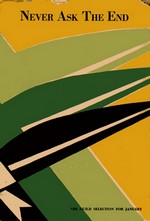
In the Grande Place, the peaked fronts of the old Guild Halls, as rich as wedding cake with tier on tier of sculptured figures, seemed asleep. The rain had lifted. They descended from the motor, walking softly on the wet grey flagstones, as in a cloister. The buildings enclosed their period and atmosphere inviolate, locking the ranks against any modern intrusion. If one went, the rest would crumble, betrayed to the time spirit.
“This is where the Spaniards used to burn heretics,” Russ pointed to a small memorial set in the pavement. Marta averted her mind. If you let yourself contemplate the monstrous sum of deliberate cruelty in known history, the fact that it is a part of human nature, you wanted to creep into some hiding place and cease to be. She said, “Handy for postcards in those days. X marks the spot. Wish you were here. The Belgians have a lot of old scores. But I suppose they’ve washed out the Spaniards, after three hundred years, except for the formal record.”
Russ said, “They have not. They hate the Spaniards yet. It actually makes trouble when we have business with the Spanish branch, calls for considerable diplomacy in direct contacts.” Yes, if you’ve been hurt, she thought, the fear is in your blood. She could not bear uncertainty, because of that long bewilderment which left her permanently dismayed … She conceded: “The Duke of Alva would take considerable washing out.” She wondered if hell might be an inescapable knowledge of what others think of you, after you are dead. Not so good for most of us. Then a mass would help, a kind thought, with music and candles. But Alva wouldn’t be let go to his masses; they’d hold him here at the stake he built, by the strength of their hate. She was not a Catholic, had never been anything, nor wished to be; but the forms of religion engaged her intellect. Disbelief did not wash them out; the mysteries then became one mystery of the creative imagination: that all these gods and devils and visions of judgment should exist in the brain of man, if nowhere else. Like the idea of justic, of virtue, of mercy. Say it all began in the crude barbaric legend of a warrior chief or a wise matriarch, or in a child’s trust in the omnipotence of its elders; and that it was passed on and magnified by untraceable degrees until it grew into the splendid and shining images of poetic myth, Athena with her golden spear, Saint Michael with the sword of the spirit: the process of transmutation remained inexplicable and marvelous. If it were only the insubstantial shape of what men would be if they could, how come so pitiful a creature to desire so greatly? … She checked herself, feeling that she was boring Pauline and Russ by such ponderous and futile fancies, though unuttered. They were not in the mood for history, nor was she; they wished to make the most of their own hour, of one another. Holding hands, for comfort….
Editor’s Comments
The story in
Never Ask the End is almost ridiculously simple: Marta Brown and Pauline Gardiner, two American women in their early forties, are visiting Paris. They have dinner with an old friend of Marta’s, Russ Girard, another American, who’s now an executive with a firm based in Antwerp. Russ invites the women to visit him in Antwerp. They spend a weekend together in the Ardennes. They agree to meet again in London, but Russ is delayed and arrives after Pauline has to board a liner back to the U.S. Marta and Russ enjoy London for a day or so, then return to Paris together, where Russ then heads off to Italy on business.
The extraodinary richness of Never Ask the End is certainly not to be found in the plot. It’s most definitely a book written in the wake of Ulysses, Virginia Woolf, and other early stream of consciousness novels. “… [T]he mind is a deep pool, froth and ripples and straws on the surface and God knows what down below, water weeds and drowned things,” Marta thinks to herself at one point, and Paterson freely switches between physical events and the thoughts of her characters throughout the novel. Even for an experienced current-day reader, accustomed to narrative techniques of considerable complexity, Never Ask the End can be a challenge at first. I have to confess that I stopped after about seventy-five pages and started over again, reading more slowly and carefully the second time, in order to catch and keep track of the references to past experiences Paterson seeds in the flow of her characters’ thoughts.
Fortunately, there is much to reward the careful reader. Paterson, who worked for many years as a book critic for the New York Herald Tribune, accumulated more than her share of cultural and historical background fodder in the course of over a decade of reading and reviewing several books each week. Her principle character, Marta — something of an alter ego — is a cartoonist rather than a critic, but she appears to have had a reading diet similar to Paterson’s. She moves through Europe picking up historical connections and references at every brush.
Bits of history and snatches of poetry constantly slip into Marta’s thoughts, but she is sophisticated enough to keep most of them to herself. Instead, her public face is that of a wisecracker. “My epitaph will be, ‘She was right, as usual’,” Marta tells Pauline at one point, and she slips in an occasional quip worthy of her contemporary, Dorothy Parker:
Later in the morning they pursued the cathedral spire through a maze of narrow crooked streets, loitering by shopwindows filled with cheap lace, imitation jewelry and rayon undergarments. “These must be the Belgian atrocities,” Marta conjectured.
Marta includes herself among the targets of her humor:
“The English and the French,” Marta heard herself saying profoundly, “are different.” Fortunately Pauline ignored this contribution to world thought.
Marta and Pauline know each other from time they spent together in the Midwest twenty-some years before. Both women had left their homes, found jobs as waitress or clerk, and begun establishing themselves as that novelty of the time, the independent woman. One of the most interesting aspects of Never Ask the End is the glimpse it offers into the transformation of the role of women that began around the turn of the last century:
But all of us … Marta knit her brows, tracing through the confusion of her experience a thread of pattern … An army of girls, without banners, in mutiny…. Going out of the home, each alone, but multitudes at once. We didn’t intend to go back, to be caught; we were leaving it behind forever. Child-bearing and drudgery and dependence…. Just as we grew up, the door was open. Our mothers hadn’t had the chance. But they told us to run for it. And we did…
While working as a waitress at a hotel, Marta fell in love with a married man, a traveling salesman who often stayed at the hotel. Around the same time, Pauline fell for Keith, a handsome local charmer (“He was no damn good. But attractive,” Pauline recalls). Marta’s love never got beyond a rare walk holding hands, and the man eventually left, even after coming to talk with Marta about getting married soon after his wife died. One afternoon, Keith came to visit Pauline, found Marta reading by herself instead, and invited Marta for a horse ride. In the space of a few days, Keith and Marta decided to marry. Pauline soon after married George, who later proved to be an alcoholic. After a few years of marriage, Marta and Keith came to realize there was no love between them, and separated. Marta moved to New York and remained a working woman. Pauline had two children, bore up with George’s drinking, and found herself a widow at forty.
Throughout this time, the two women remain friends, and their history — both at the personal level and at the level of the social changes they’ve experienced — forms a tapestry of connections that Paterson manages to bring into even the smallest of details:
“Have you got a pin?” Pauline whispered, though they were well out of hearing, out of sight.
“A pin — what for?” Marta made a sketchy useless motion of searching. “The elastic of my knickers is done bust,” Pauline muttered tragically. “Wouldn’t it —” Marta had no pin. There was a historic transformation; she had not even a button about her, everything she wore pulled on, wisps of silk tied with a bit of ribbon. Women used to be clamped with whalebone and triple brass, bristling with pins. Our moral support, Marta thought; if it hadn’t been for that…. It was a state of mind….
Paterson’s perspective on the relationships and situations of Marta and Pauline strikes a modern reader as remarkably feminist. Never Ask the End was written by a woman who understood deeply that any progress she and her contemporaries had achieved did not alter a fundamental reality:
Marta remembered Alma, with her deep clear melancholy, saying that a woman’s point of view differs from a man’s because women can be used….
Paterson develops this thought into a howl of rage against the thoughtless power of men over women:
Even the process of childbearing is a physical indignity which no sentimentalizing can alter. One might resign oneself to that; the flesh is an increasing humiliation to the spirit, until in the end it is cast off with relief as a worn-out rag. But one may learn the lesson too soon. At her age, Marta thought, women were supposed to be overcome by regret if they were childless. When she was depressed, reckoning her errors, she was glad that at least she had no children. Otherwise she did not think of it at all. The exhortations of priests, moralists, statesmen, aroused only her remote contempt. Fat comfortable men in robes of office … Their insistence that tired, overworked, unwilling women must “submit,” bear more and more children, the fruit of apathy, fear, or even disgust, seemed to Marta a mental rape, a refinement of lust. She would answer to neither man nor God for her refusal.
Still, the different choices each woman has made — Marta’s to leave her husband and define herself as a working woman, Pauline’s to stay with her husband and find herself defined as wife and mother — add up to gulf between them that even the strongest friendship cannot always bridge:
How difficult, how impossible communication is, Marta thought…. At the moment, she and Pauline were about four feet apart in space, with no material obstacle to confidences, and no external distraction. The difficulty lay in the fact that an emotional truth is clothed in circumstance, and derives from a series of untraceable causes dating back to creation. To make it understandable, and the action resulting from it, one would have to reconstitute the universe as it was at precisely that interval of time, with the auditor in the center of it, and gifted with omniscience.
But this divide exists between all people, Paterson continues:
Now, for instance, Pauline, in a chrysanthemum kimono, was propped against the pillows of the lower berth, frowning slightly at a handful of letters scattered over the coverlet. Marta lay flat on her stomach in the upper berth. A curtain swayed, a draught from an invisible source blew on her bare shoulders. The white-painted box of a stateroom in which they were confined slanted crazily on the Channel waves. And if later Marta were to endeavor to explain, say to Alma — though she wouldn’t, but say Alma, whose receptive sympathy was unfailing — how futile this attempt at explanation had been, she would be impelled to describe these externals, as if they were important. Their significance was purely associational, not valid outside the minds of the participants.
Marta takes no special pride in her decision to make her own way:
Marta exclaimed out of the middle of her thoughts, because the three of them at that moment were enclosed in a fragile sphere of sympathy, so exquisitely perfect that it didn’t matter whether they understood or not: “Words cannot express the sheer horror that overcomes me when I find myself in a good home. A happy family, and a radio, and a concrete garage….” But why? What was the matter with her? Her own life was toilsome, solitary, insecure. She had made a wilderness and called it peace.
Paterson is remarkably effective in sketching, with the briefest of strokes, the complex ties that can be established between people. Five years or more before their meeting in Europe, Marta and Russ had shared a cab back from a party in New York. During the ride, Russ had taken Marta in his arms and confessed a great passion for her. Unsure of his motivations — and her own — Marta chose not to pursue the opening, and the two remained friends only, keeping up a periodic correspondence.
Now, in Europe, Marta see that Pauline is attracted to Russ, and she sincerely attempts to give the two some time to development their feelings, even as she struggles to understand her own desires for him. But circumstances conspire to make the effort futile. Pauline returns to the States without her hoped-for day with Russ in London. Instead, it is Marta and Russ who take a ride together to see Windsor Castle, and later spend the night together.
Marta has no illusions about their affair, though. She comes to see what an effort of will it has taken Russ to create and maintain his business face, and Russ himself allows an occasional mention of the physical cost he had paid. “My arms are always tired,” he says at one point, and later, he confides in Marta that he had already suffered some heart problems. He talks of holding on long enough to earn his pension and retire to his farm, but neither he nor she takes that seriously:
They understood one another well enough. Their relation had no name because it had no conditions. Whatever was between them was like those legends of rings exchanged or a coin broken, to be sent as a summons only in some unforeseen circumstance of finality…. She told herself she was romantic, inventing justifications. No harm, anyhow. Not with Russ. That was what he wished he could add to the past — wear his rue with a difference. They would not hurt each other.
Never Ask the End is a meditation on relationships. Marta and Pauline are, briefly and only in the most tangential way, rivals for Russ’ affection, but at no time does this competition take precedence over their friendship:
Pauline is a little in love with Russ now. As she [Marta] was with Lucien … Friendship is personal. Love, passion, don’t seem to be. We recognize our friends, we fall in love with strangers; they remain strangers.
If it’s true, as Fitzgerald once wrote, that, “The test of a first-rate intelligence is the ability to hold two opposed ideas in the mind at the same time, and still retain the ability to function,” then all three of Paterson’s main characters are geniuses. Marta knows, for example, that she wants the comfort of a sustained love affair with Russ and that she is temperamentally incapable of it. “… [T]he fault was in herself. She couldn’t walk straight along a pavement.” It’s just this intelligence that makes Never Ask the End such a rich and refreshingly adult book.
Paterson is best known now as, in the words of her biographer, Stephen Cox, the “earliest progenitor of libertarianism as we know it today.” Her 1943 book, The God of the Machine argues against the possibility of engineering economies and advocates freedom and personal energy as the driving forces of progress. Cox’s 2004 biography, The Woman and the Dynamo: Isabel Paterson and the Idea of America revived Paterson’s role as a key influence on — and perhaps, in the end, a more profound thinker than — Ayn Rand.
Now and there one can glimpse a bit of this aspect of Paterson’s thinking in Never Ask the End, but I would caution anyone against reading it in hopes of pulling out some juicy bits of libertarian insight — just as I would warn non-Randians against shying away from it because of what others have made of Paterson and her political views since her rediscovery. In Never Ask the End, three intelligent and world-wise middle-aged people share a few days and a few thoughts with each other (and with us). The result will probably not change anyone’s world: but you will certainly feel lucky to have had such a chance — and to have been asked so little in return.
Note: Never Ask the End is currently available in an expensive paperback edition from Kessinger Publishing, but I recommend purchasing one of the much less expensive copies of the original Literary Guild release from 1933 available from Amazon or AddAll.com. For one thing, the Kessinger edition is nothing more than a bound photocopy of the William Morrow first edition; for another, Kessinger specialises in such reissues of books on the fringe of copyright and I’m not entirely sure if theirs is an enterprise I care to support.
New! Never Ask the End is now available in PDF format from the Ludwig Mies Institute website: http://mises.org/books/never_ask_the_end_paterson.pdf.
Other Comments
- · Roberts Tapley, Bookman, January 1933
- Abundantly garnished with good things of Mrs. Paterson’s own and good things she has gleaned here and there, Never Ask the End looms larger in retrospect than a mere aggregate of good things; it creates the impression of life and intrinsic force, or original power, like something transfused and welded and informed by creative heat at the core.
- · Ellen Glasgow, Books, 8 January 1933
- The whole modern approach to life, with its eagerness, its lightness, its disenchantment, its feeling for the moment as it passes and because it passes, its joy but not too much joy, its pain but not too much pain, its courage in the face of time, its secret loyalties of the heart, and yet, somehow, somewhere, its lack of the state or quality of mind Spinoza called “blessedness” — all this is woven here into a pattern that seems as real as the hour in which we are living. Never Ask the End is a book of delicacy, charm, truth, interfused with the something different that is personality.
- · Nation, 1 February 1933
- It is part of Mrs. Paterson’s skill that the sense of disillusionment is not the ultimate mood of the novel. Though she constantly conveys it to us with a subtle and civilized irony, it is the behavior of the three characters themselves that the moral of the tale must be read. Desperately gallant in the wearisome adventure of Europe, they have at last hit upon the expedient of substituting wit for emotion. And this, one feels, is not merely the technique of the novel, but a solution that Mrs. Paterson offers us — a complete philosophy for living in these times.
- · James Branch Cabell, Saturday Review, 7 January 1933
- Mrs. Paterson has made, in Never Ask the End, a book which any tolerably civilized American must regard, throughout, with a sort of charmed squirming. Of those of us Americans, reasonably cultured, who have today reached responsible middle life, here is an honest portrait, all the honest, will admit perforce. Thus, and not otherwise, have we lived, from each moment to the next moment, during the most notable generation, it may be, and during the most disastrous generation, it is certain, in the world’s history.
Find Out More
Locate a Copy
Never Ask the End, by Isabel Paterson
New York: William Morrow & Co., 1933
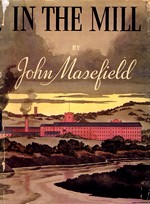

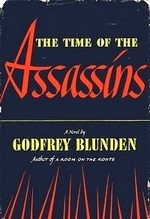 I first read Godfrey Blunden’s
I first read Godfrey Blunden’s 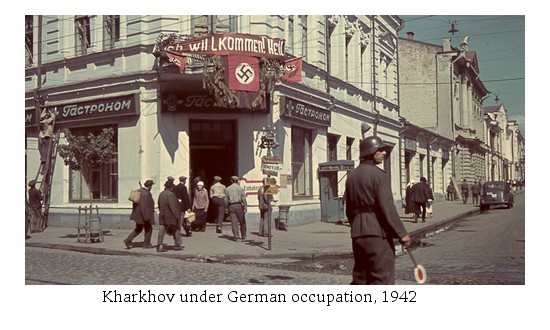
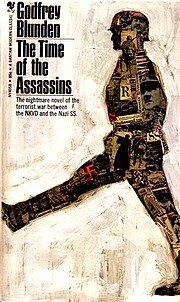 If history is a broom, sweeping back and forth through time, then
If history is a broom, sweeping back and forth through time, then 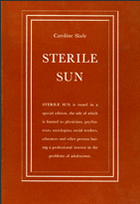 Her first novel,
Her first novel, 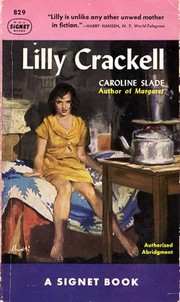 I read
I read 
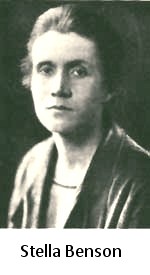 The book opens innocently. Benson vouches for the real existence of the count and offers a synopsis of his noble pedigree (quite unconnected with that of the famous painter) as a member of “one of the most distinguiched aristocratic famelys of Europe.” She describes meeting him while he was a patient in a charity hospital in Hong Kong. According to Marlene Baldwin Davis’
The book opens innocently. Benson vouches for the real existence of the count and offers a synopsis of his noble pedigree (quite unconnected with that of the famous painter) as a member of “one of the most distinguiched aristocratic famelys of Europe.” She describes meeting him while he was a patient in a charity hospital in Hong Kong. According to Marlene Baldwin Davis’ 
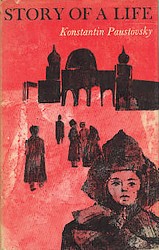 Paustovsky was a member of the Writer’s Union during years when it was probably impossible to work without cutting some bargain, committing some betrayal large or small, and ever so rarely we witness a tip of the hat to the prevailing dogma: “It was only in 1920 that I realized that there was no way other than the one chosen by my people. Then at once my heart felt easier.” Usually, these outbursts of Party faith are brief, awkward, and out of step with the rest of the story. The worst, a caricature of a
Paustovsky was a member of the Writer’s Union during years when it was probably impossible to work without cutting some bargain, committing some betrayal large or small, and ever so rarely we witness a tip of the hat to the prevailing dogma: “It was only in 1920 that I realized that there was no way other than the one chosen by my people. Then at once my heart felt easier.” Usually, these outbursts of Party faith are brief, awkward, and out of step with the rest of the story. The worst, a caricature of a 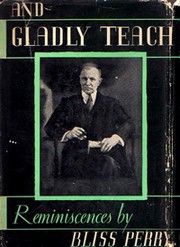
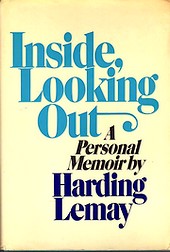
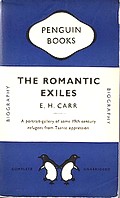 The
The 
 Don Napoli has created a wonderful site,
Don Napoli has created a wonderful site, 